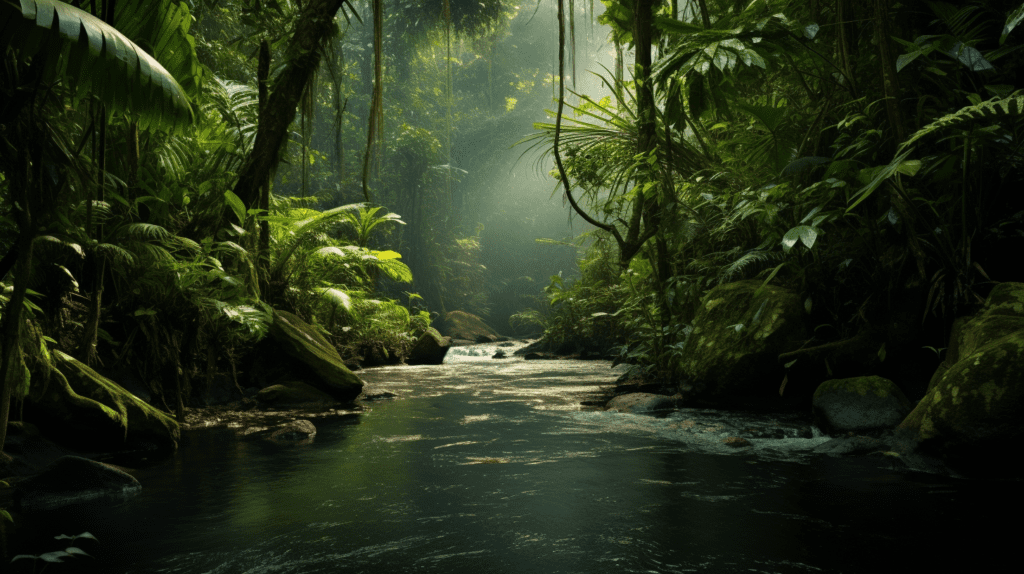
Hidden beneath the tree canopy deep in the Amazon rainforest, the earliest and oldest urban network of ancient cities lay undiscovered for 2,500 years.
A team of archaeologists from France, Germany, Ecuador, and Puerto Rico, who investigated the Amazon for over two decades, made an unprecedented discovery.
The archaeologists uncovered what is now being described as the earliest and largest urban network built and dug up features never found in the Amazon. The lost cities of highly structured pre-Hispanic settlements were rich with features. There were wide streets with long, straight roads. Plazas and clusters of monumental platforms were found in the Upano Valley of Amazonian Ecuador, in the eastern foothills of the Andes.
Their research was published in the journal Science.
Read More: Lost in Time: The 10 Most Mysterious Cities in Ancient History
Evidence of Advanced Engineering
Between approximately 500 BCE and 300 to 600 CE, the Kilamope and, later, the Upano cultures began building mounds and houses on earthen platforms. The LiDAR data revealed more than 6,000 platforms. These were discovered in the southern half of the 232-square-mile area surveyed. The platforms were arranged in groups of 3 to 6 units. These were set around a plaza with a central platform. The complex at Kilamope had a platform measuring 459 feet by 131 feet.
In addition, the researchers also discovered monumental complexes with much larger platforms. The archaeologists believe these probably had a civic or ceremonial function. At least 15 clusters of such complexes were discovered and identified as settlements.
Some of the settlements had ditches that were dug to protect them. Others had obstructions to roads, particularly near some of the large complexes. The archaeologists say this suggests that the settlements were exposed to threats. They hypothesized these were either external or from tensions between the groups.
The researchers found that even the most isolated complexes were linked by pathways and an extensive network of larger, straight roads with curbs.
The study authors concluded that the overall organization of the ancient cities suggests “the existence of advanced engineering” at the time. One of the roads extended 16 miles.
“The road network is very sophisticated,” said Dr. Antoine Dorison, a co-author of the study. “It extends over a vast distance, everything is connected. And there are right angles, which is very impressive.”
Dorison explained that it is much harder to build a straight road than one that fits in with the landscape.
Read More: The Top 10 Unsolved Mysteries That Baffle Historians
Unique Findings for South America
Some of the findings were unique for South America, such as the tog no and rectangular platforms that were arranged together. Experts say the research indicates that these societies were well organized and interconnected, as evidenced by the long, sunken roads between settlements.
Archaeologists have unearthed pits and hearths in the platforms, as well as jars and stones that were used to grind plants and burnt seeds. The researchers have hypothesized that the Kilamope and Upano people living there probably mostly focused on agriculture. They probably lived on a diet of maize and sweet potato. They probably drank “chicha,” which is a type of sweet beer.
How Did the Team Find This Hidden City?
After beginning the research with fieldwork, the team deployed LiDAR, or Light Detection and Ranging, a remote sensing method that uses light to measure distances. LiDAR, also known as laser scanning or 3D scanning, uses a laser beam that is reflected off objects to create 3D representations of areas. It also uses ultraviolet, visible, or near-infrared light to image objects.
LiDAR systems can be deployed airborne and piloted or via drone-based platforms to penetrate tree canopies. While LiDAR is effective at penetrating tree canopies in dense forests, the laser pulses can still be partially absorbed or scattered by the leaves, branches, and other vegetation, according to Blue Falcon Aerial. This can decrease the data quality, especially in areas with very dense foliage or multiple layers of vegetation.
Nonetheless, the team of researchers was able to capture enough data to make this extraordinary discovery and map out the massive size of the urban network within the rainforest.
“The LiDAR gave us an overview of the region and we could appreciate greatly the size of the sites,” Stéphen Rostain, lead author of the study and an archeologist and director of Research at France’s National Center for Scientific Research (CNRS) told CNN.
Rostain described the discovery as “incredible” and said the LiDAR showed the team a “complete web” of dug roads.
“The LiDAR was the cherry on the cake,” Rostain added.
What’s next?
The next step for the researchers will be investigating an adjoining 116-square-mile area that has not yet been surveyed, BBC reported.





